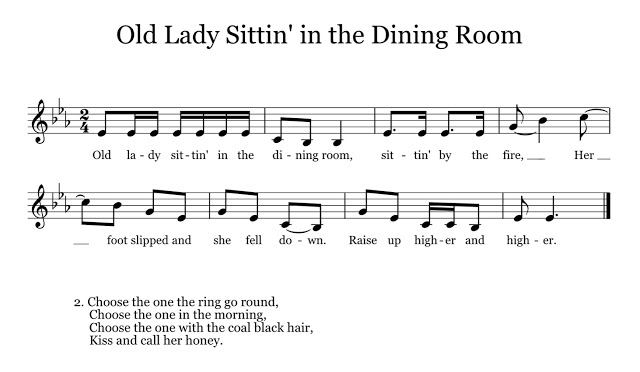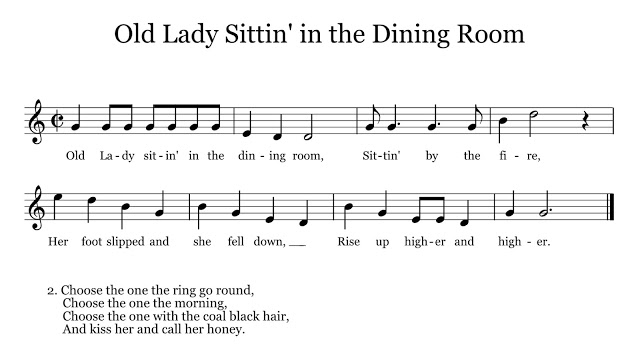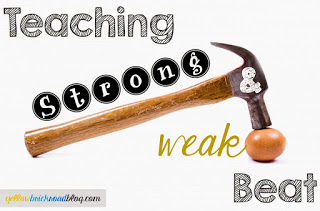You probably already noticed this, but I’m a huge fan of circle games. They’re so easy to teach and are a fun way to make sure every student feels included and is moving with the music. I discovered today’s circle game in one of my favorite songbooks, 150 American Folk Songs. However, I chose to use the version from the Kodály Center website instead. The version I used includes syncopation, while the version from my songbook doesn’t.
I’ve included both notations below so that you can choose the one that best suits your lesson plan.
For the video, I used the first version, from the Kodály Center website.
CIRCLE GAME
Circle games are a great way to introduce new songs because it gets the students moving from the beginning. It also gives you an opportunity to model singing the song several times without the students becoming bored. Once they’ve heard it enough, they can begin taking over the lead comfortably.
To play the game, students create a circle with one person in the middle (“it”). “It” acts out the lyrics of the first verse while the rest of the students step clockwise in the circle to the steady beat (the direction doesn’t really matter, it just gives students an extra chance to move to the beat). On the second verse, the circle changes direction, while “it” skips around the perimeter. When the students sing, “Kiss and call her honey”, “it” chooses a person to trade places with and the song begins again.
Naturally, your students might squirm and giggle at the word “kiss”. They could choose their own alternative, such as a curtsy, bow, handshake, or tap on the shoulder. Use whatever works best for your group! When I taught circle games, I always started in the middle first, so students could see exactly how the actions were to be performed. Also, I think it always helps to have someone else go first, especially for shy students.
SYNCOPATION
This is great song to begin teaching the concept of syncopation because it occurs smack-dab in the middle of the song and is rather jarring. Since the students in the circle will be stepping to the beat, they will notice it. After playing the game, ask students if they noticed anything about the steady beat. For example, “Did the steady beat feel off at some point?” or “Was there any point in the song where it was a little tricky to step to the beat?” You can build on that discussion by reviewing the terms “strong beat” and “weak beat”. I wrote a blog post about this topic, which you can read more about by clicking the image below.
I also have a few pages in my Interactive Notebook Sampler that pertain to the concept of strong and weak beats. You can download the sampler for free here.
NEWSLETTER
Last, but certainly not least, I’ll be sending out my third newsletter to all subscribers this Friday. As always, it will include an exclusive freebie (one which can be used for multiple purposes). If you haven’t signed up yet, I highly suggest that you do! I send the newsletters out once a month, and I’m always open to suggestions for future freebies.
#mc_embed_signup{background:#fff; clear:left; font:14px Helvetica,Arial,sans-serif; }
/* Add your own MailChimp form style overrides in your site stylesheet or in this style block.
We recommend moving this block and the preceding CSS link to the HEAD of your HTML file. */
Subscribe to the Yellow Brick Road Blog Newsletter
* indicates required
Email Address *
First Name *
Last Name *
(function($) {window.fnames = new Array(); window.ftypes = new Array();fnames[0]=’EMAIL’;ftypes[0]=’email’;fnames[1]=’FNAME’;ftypes[1]=’text’;fnames[2]=’LNAME’;ftypes[2]=’text’;}(jQuery));var $mcj = jQuery.noConflict(true);



